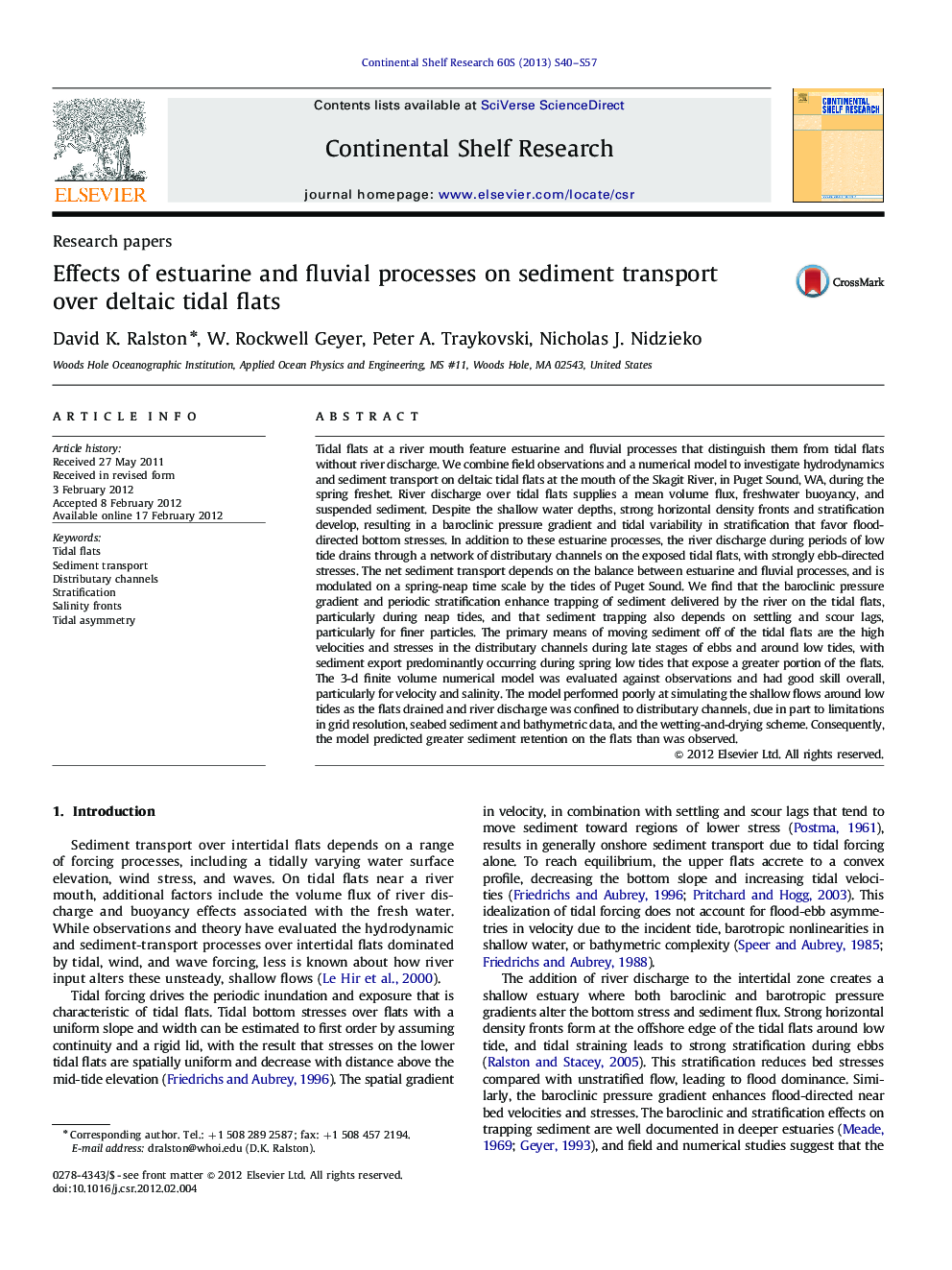| کد مقاله | کد نشریه | سال انتشار | مقاله انگلیسی | نسخه تمام متن |
|---|---|---|---|---|
| 4532157 | 1325100 | 2013 | 18 صفحه PDF | دانلود رایگان |

Tidal flats at a river mouth feature estuarine and fluvial processes that distinguish them from tidal flats without river discharge. We combine field observations and a numerical model to investigate hydrodynamics and sediment transport on deltaic tidal flats at the mouth of the Skagit River, in Puget Sound, WA, during the spring freshet. River discharge over tidal flats supplies a mean volume flux, freshwater buoyancy, and suspended sediment. Despite the shallow water depths, strong horizontal density fronts and stratification develop, resulting in a baroclinic pressure gradient and tidal variability in stratification that favor flood-directed bottom stresses. In addition to these estuarine processes, the river discharge during periods of low tide drains through a network of distributary channels on the exposed tidal flats, with strongly ebb-directed stresses. The net sediment transport depends on the balance between estuarine and fluvial processes, and is modulated on a spring-neap time scale by the tides of Puget Sound. We find that the baroclinic pressure gradient and periodic stratification enhance trapping of sediment delivered by the river on the tidal flats, particularly during neap tides, and that sediment trapping also depends on settling and scour lags, particularly for finer particles. The primary means of moving sediment off of the tidal flats are the high velocities and stresses in the distributary channels during late stages of ebbs and around low tides, with sediment export predominantly occurring during spring low tides that expose a greater portion of the flats. The 3-d finite volume numerical model was evaluated against observations and had good skill overall, particularly for velocity and salinity. The model performed poorly at simulating the shallow flows around low tides as the flats drained and river discharge was confined to distributary channels, due in part to limitations in grid resolution, seabed sediment and bathymetric data, and the wetting-and-drying scheme. Consequently, the model predicted greater sediment retention on the flats than was observed.
► Observations and modeling detail estuarine processes on fluvial (Skagit) tidal flats.
► Strong salinity fronts and stratification enhance landward stresses.
► Fluvial discharge in exposed channels produce high seaward velocities and stresses.
► Sediment export dominated by channelized flow around low tide.
► Model skills high, but deficiencies in bathymetric resolution and wetting/drying.
Journal: Continental Shelf Research - Volume 60, Supplement, 15 June 2013, Pages S40–S57